7.4 /10 1 Votes
8/10 IGN Director(s) Toshiyuki Nagahara Mode(s) Single-player | 8/10 Play Mob Org 6/10 Steam Artist(s) Hideaki Moriya Genre(s) Platformer Initial release date 7 October 2010 | |||||||||||||||||||||||||||||||||
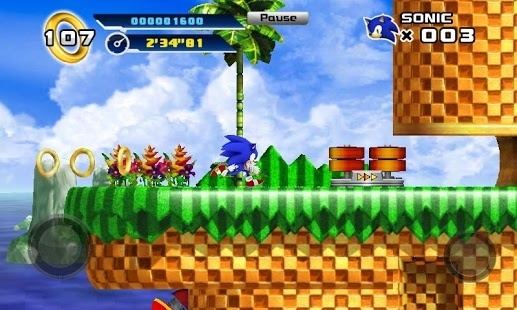 | ||||||||||||||||||||||||||||||||||
Producer(s) Takashi IizukaHiroyuki Kawano Similar Sonic the Hedgehog games, Sega games, Platform games | ||||||||||||||||||||||||||||||||||
Sonic the Hedgehog 4: Episode I (ソニック・ザ・ヘッジホッグ
Contents
Episode I was released in October 2010 for iOS, PlayStation Network, WiiWare and Xbox Live Arcade. A release for Windows Phone 7 followed in June 2011, for PC (via Steam) and Android in January 2012, for BlackBerry PlayBook in July 2012, and for Ouya in July 2013. A direct follow-up, Sonic the Hedgehog 4: Episode II, was released in 2012.
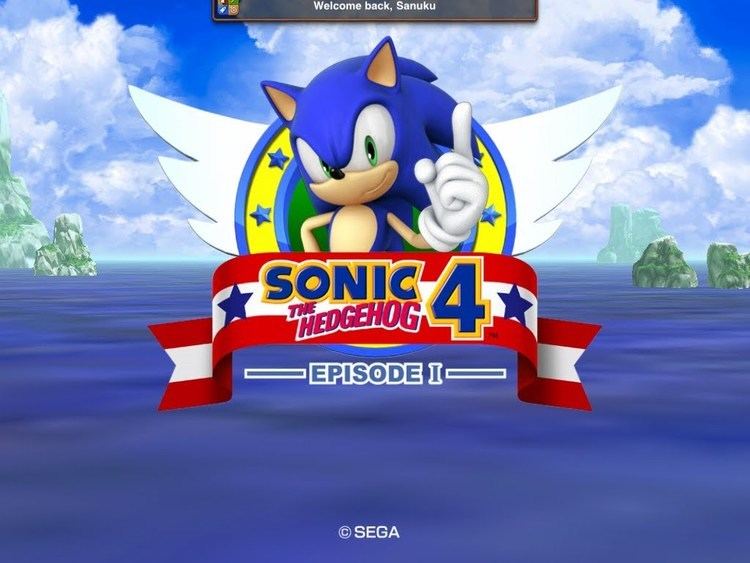
Gameplay
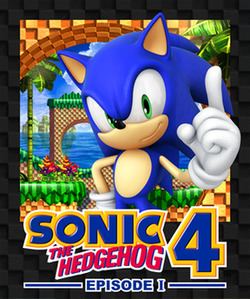
Sonic the Hedgehog 4: Episode I is a 2D side-scrolling platformer reminiscent of the original Sonic games for the Sega Mega Drive/Genesis. Players control Sonic the Hedgehog, using mechanics such as the original spin dash and power-ups such as shields, invincibility and speed shoes. Sonic is also able to use a homing attack, which homes in on a targeted enemy or object.
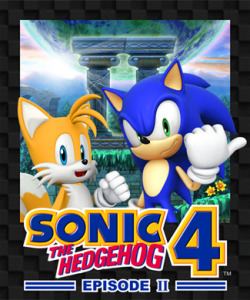
Unlike the first three classic Sonic games, after completing the first act, the player is able to freely choose which zone to play via a world map, or choose to play the zones sequentially. Each of the four zones contain three acts, followed by a separate boss battle act, rather than the boss being included at the end of the third act. Each boss act is unlocked by completing all three acts in that zone. The boss battles, similar to the zones themselves, are inspired by the boss battles from older Sonic titles, although there are variations. Once all acts and boss battles within each zone are cleared, players gain access to a fifth and final zone.
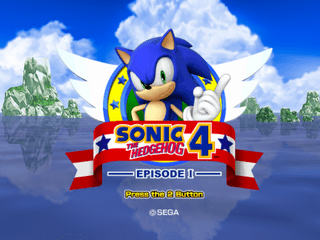
Special Stages in Episode I, accessed by finishing an act with at least 50 rings and then jumping into the Giant Ring that appears at the end of the stage, are based on the "Special Stages" in the original Sonic the Hedgehog. The player must tilt the playing field in order to navigate Sonic through a maze within a set time limit, collecting rings to open gates and time bonuses along the way, with the goal of each stage being to collect a Chaos Emerald.
For the first time since Sonic & Knuckles, Sonic can transform into Super Sonic during regular levels after collecting all the Chaos Emeralds from the Special Stages, and at least 50 rings within the current act.
The game is playable in up to 1080p HD on the PlayStation 3 and Xbox 360, and 480p on the Wii. The mobile versions of the game can be fully controlled with either the accelerometers or virtual buttons on the touchscreen. Certain levels also make specific use of the accelerometers. Players are also able to upload their game information to online leaderboards to compare level completion times and high scores.
Plot
Sonic the Hedgehog 4: Episode I is set after the events of Sonic & Knuckles (1994). With the Death Egg destroyed, Sonic heads off to explore new territories alone. However, antagonist Dr. Eggman has survived their last encounter, and has revisited and improved some of his creations from previous games, attempting to get rid of Sonic as the first part of his new grandiose scheme. Sonic's battle with Eggman culminates with Sonic defeating Eggman in his new base, the E.G.G. Station.
If all seven Chaos Emeralds are collected, a brief post-credits cutscene shows a silhouette of Metal Sonic, hinting at the next episode.
Development
The game's existence was first revealed on GameSpot on September 9, 2009, under the code name Project Needlemouse (the name was derived from Mr. Needlemouse, an early prototype of Sonic pitched to Sega by artist Naoto Ohshima). The site published a brief teaser trailer and an interview with Sega's Ken Balough who acknowledged that "old-school Sonic fans have long asked to see Sonic return to a more 2D style of gameplay," stating that "Needlemouse is that critical first step that brings Sonic back to his 2D roots."
The decision to create the game using a 2D graphical style was made after considering older Sonic fans' possible reactions to the game versus those of younger players:
On January 11, 2010, Sega of America began a "character countdown" on their blog, removing potential playable characters from a list, which by January 14, 2010 revealed the game would feature Sonic as the only playable character. Also revealed was concept art which showcased classic enemies from early Sonic games. On February 2, Sega updated the front page of Sega of America's website with a short flash animation featuring a sample of music from the game, reminiscent of Mega Drive/Genesis sounds. The game's proper title was revealed on February 4, 2010, as Sonic the Hedgehog 4: Episode I, along with the debut of in-game footage.
The game was developed primarily by Dimps, under the direction of Sonic Team. Takashi Iizuka, who has worked on various Sonic games, notably as senior level designer for Sonic 3 & Knuckles, served as the game's producer. Music and sound were composed by Jun Senoue, also a mainstay of the series, and were intended to be reminiscent of classic Genesis titles, via the use of drum samples from the original Sonic and Sonic the Hedgehog 2, and relatively lo-fi synth samples.
Not long after Sonic 4 was officially announced, rumors surfaced that the game was available to members of the Xbox 360's online game testing service for developers, PartnerNet. On April 3, PartnerNet was shut down due to the leaks. The leaked footage led to harsh criticism of the game physics and certain level designs.
On May 20, 2010, Sega announced that Sonic 4 would be available on the App Store for the iOS, and that the game was to be moved from its original summer 2010 deadline to late 2010, so as to extend development time. Izuka claims that this was because although he planned for all versions to be similar, two levels that worked on iOS did not work as well for consoles. The iOS version retains these levels, which utilise accelerometer controls, while new levels were built for the console versions. The announcement of the delay was also accompanied by an interview with Sega's Ken Balough, in which it was explained that Sega had taken note of fan reaction to the game and were incorporating that feedback into the ongoing development. Areas specifically mentioned were a reworking of the "floaty" nature of the gravity and physics, and a redesign of some levels and elements in order to accommodate more of the momentum-driven gameplay style that was a staple of earlier entries in the series.
Reception
Sonic the Hedgehog 4: Episode I received generally positive reviews. Aggregating review websites GameRankings and Metacritic gave the Wii version 75.42% and 81/100, the Xbox 360 version 74.85% and 72/100 the PlayStation 3 version 73.23% and 74/100, and the iOS version 74.29% and 70/100.
IGN's Hilary Goldstein gave the game a score of 8.0 and an Editor's Choice award, calling it "short but sweet and well worth downloading." GamesRadar's Justin Towell gave it a score of 9/10, calling it "deserving of the name, Sonic the Hedgehog 4." 1UP.com's Kat Bailey gave it a B rank, praising the game's speed while criticizing some occasional poor design, such as boss battles and puzzles. GameTrailers gave it a 7.5, calling it a worthy investment for Sonic fans. Digital Spy gave it three out of five stars, with reviewer Liam Martin answering the question of whether or not it lived up to its hype: "Despite some issues with the size of the game and its difficulty (it's very easy), the answer is yes, but only just." Eurogamer's Ellie Gibson gave it a 9/10, calling it "gloriously fun" and "brilliantly paced."
Criticism of the game focused on poor physics and lack of momentum; both aspects were often cited as being inferior to the momentum-based physics from the 16-bit Genesis games.
Speaking with VG247 in 2011, Sega West CEO Mike Hayes stated that Episode I cleared over one million downloads across all the platforms, with the PlayStation 3 version selling the most copies.
